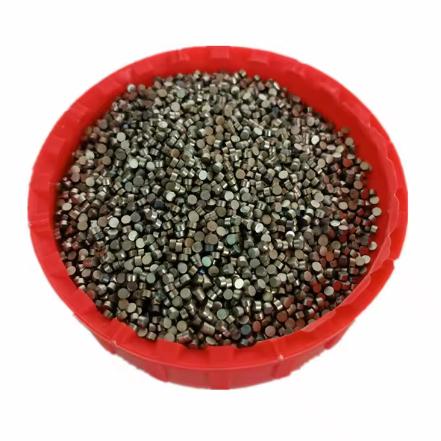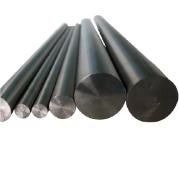**Title: The Great Thin vs Thick Showdown: Sheet Metal vs Plate Metal**
(How Do U Distinguish Between Sheet Metal And Plate Metal)
So you’re working on a project. Maybe it’s a custom car part, a sturdy machine frame, or even some cool art. You need metal. But someone mentions “sheet metal” and another says “plate metal.” They sound similar. But trust me, they are different worlds. Knowing the difference isn’t just shop talk. It decides how you cut it, bend it, weld it, and what the final thing can handle. Let’s settle this thin vs thick battle once and for all.
**1. What Exactly Are Sheet Metal and Plate Metal?**
Think of metal like paper. Sheet metal is the thin stuff. It’s flexible. You can bend it easily by hand for the thinner gauges. Manufacturers roll it out flat from big coils. The key number here is thickness. Sheet metal is generally anything under about 1/4 inch (6mm), though the exact cutoff can vary slightly. Common examples include the metal in your car door, ductwork for your AC, or the casing on your computer. It comes in various metals: steel, aluminum, copper, brass. You often hear thickness described in “gauge” – a number system where a higher gauge number means thinner metal (like 18 gauge is thinner than 16 gauge).
Plate metal is the thick, heavy-duty cousin. Forget bending this by hand. It’s substantial, rigid, and meant for serious strength. Plate metal starts where sheet metal stops, typically around 1/4 inch (6mm) thick and goes way up – inches thick! Think bridge supports, the hulls of big ships, heavy machinery bases, or large structural frames. It’s cut from massive, thick slabs produced by steel mills. Thickness is usually given directly in inches or millimeters. While steel is most common for thick plates, you can find aluminum plate too, especially where weight matters but strength is still needed.
**2. Why Does the Thickness Difference Matter So Much?**
The thickness isn’t just a number. It changes everything about how the metal behaves. Sheet metal’s thinness makes it light and formable. You can punch holes in it easily. You can bend it into complex curves without needing massive machines (for moderate thicknesses). This makes it perfect for enclosures, panels, and parts needing intricate shapes. Its relative lightness is a big plus in vehicles and aircraft.
Plate metal’s thickness gives it brute strength and stiffness. It resists bending under heavy loads. It absorbs impact much better. This makes it essential for structural jobs, like holding up buildings or machinery, or for wear surfaces that get constantly battered. However, this thickness comes with challenges. It’s heavy, making handling harder. Cutting it requires serious power – plasma cutters, lasers, or oxy-fuel torches. Bending plate needs huge, powerful press brakes. Welding thick plate requires special techniques to ensure the weld penetrates deeply and doesn’t crack. The cost is usually higher per piece because you’re using so much more raw material.
**3. How Can You Actually Tell Them Apart?**
Sometimes it’s obvious. If it’s thin enough to wobble when you shake it, it’s sheet metal. If it’s an inch thick and needs a crane to move, it’s plate. But what about pieces around that 1/4-inch mark? Here’s how to figure it out:
* **Check the Thickness:** This is the most reliable way. Use calipers or a micrometer. If it’s clearly under 1/4 inch (6mm), it’s sheet. If it’s clearly over, it’s plate. If it’s right at the edge, look at how it’s being used or sold. Ask the supplier – they’ll know their stock classifications.
* **Look at the Edges:** Sheet metal, especially thinner gauges, often has very smooth, clean edges from precise shearing or laser cutting. Plate metal edges might be rougher, especially if cut with a torch, showing a distinct bevel or oxidation line. Machined edges on plate will be smoother but still thick.
* **Feel the Flexibility:** Try gently bending a corner or edge if possible and safe. Sheet metal will have noticeable give. Plate metal will feel completely rigid and immovable at that thickness.
* **Consider the Application:** Is it a decorative cover, a duct, a small bracket? Likely sheet. Is it a foundation piece, a heavy support beam, or an anvil block? Definitely plate. Context gives strong clues.
* **Listen to the Sound:** Tap it lightly with something metal. Thinner sheet metal will often produce a higher-pitched “ping” or ringing sound. Thicker plate produces a deeper, duller “thunk.”
**4. Where Do We Use Sheet Metal vs Plate Metal? (Applications)**
Their different strengths land them in very different jobs:
* **Sheet Metal Shines Here:**
* **Automotive:** Car bodies, fenders, hoods, trunk lids, interior panels, exhaust systems.
* **Aerospace:** Aircraft skins (outer surfaces), interior panels, ducting.
* **HVAC:** All ductwork for heating and air conditioning systems.
* **Appliances:** Washing machine drums, refrigerator panels, oven exteriors.
* **Electronics:** Computer cases, server racks, enclosures for electronics.
* **Building & Construction:** Roofing, siding, gutters, downspouts, decorative elements.
* **Furniture:** Filing cabinets, shelving units, metal desks, lockers.
* **Consumer Goods:** Toolboxes, storage bins, lighting fixtures, kitchenware.
* **Plate Metal Dominates Here:**
* **Heavy Machinery:** Bases, frames, booms, buckets for excavators, bulldozers, presses.
* **Shipbuilding:** Hulls, decks, bulkheads for ships and large boats.
* **Structural Engineering:** Bridge girders, building support columns, crane runways, offshore platform legs.
* **Defense:** Armor plating for vehicles and ships.
* **Pressure Vessels:** Tanks designed to hold gases or liquids under high pressure (boilers, reactors).
* **Mining & Earthmoving:** Wear plates for dump truck beds, crusher liners, excavator teeth adapters.
* **Industrial Flooring:** Heavy-duty grating, walkways, and platforms in factories.
**5. FAQs: Quick Answers to Common Questions**
* **Q: Is there an exact thickness where metal switches from sheet to plate?**
* A: Not universally. It’s generally accepted as 1/4 inch (6mm) or 3/16 inch (about 4.76mm). The context matters. Ask your supplier if unsure. Material type can sometimes influence the term used slightly.
* **Q: Can I use plate metal for jobs needing bending?**
* A: It’s very difficult and requires massive, specialized equipment. Bending thick plate creates huge stresses. Sheet metal is designed for forming. Plate is designed for stiffness. Choose the right material for the job.
* **Q: Is sheet metal weaker than plate metal?**
* A: Per square inch, the *material* strength might be similar. But the *thickness* makes plate much stronger and stiffer overall for structural loads. A thin sheet will bend easily; a thick plate of the same material won’t. For sheer strength in a load-bearing application, plate wins.
* **Q: How is plate metal cut?**
* A: Cutting thick plate needs serious power: Oxy-fuel torches (flame cutting), Plasma cutters (high-temperature ionized gas), Laser cutters (high-power lasers, for thick plate this needs industrial lasers), or Waterjet cutters (high-pressure water with abrasive). Shearing is only practical for thinner plates.
* **Q: Is welding sheet metal different from welding plate?**
(How Do U Distinguish Between Sheet Metal And Plate Metal)
* A: Yes. Sheet metal is thin. Welding it requires careful control of heat to avoid warping or burning through. Techniques like MIG or TIG with lower heat settings are common. Welding thick plate requires higher heat and often techniques ensuring deep penetration into the joint, like using specific electrodes for stick welding or multi-pass MIG/Flux-Cored welding. Pre-heating the plate is often necessary to prevent cracking.
Inquiry us
if you want to want to know more, please feel free to contact us.


